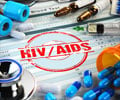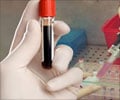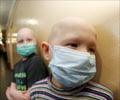Do you feel anxious and afraid of being at risk of
HIV/AIDS infection? Or even worried that you may be infected with HIV that could develop into full-blown AIDS soon? Use our
HIV Risk Calculator and answer simple questions that probe into the risk factors and determine if any of them apply to you.
What is HIV?
HIV (Human Immunodeficiency Virus) is a virus that primarily transmits through unprotected sexual intercourse. It destroys the body's immunity and causes AIDS (Acquired Immunodeficiency Syndrome).
Many different strains of HIV are grouped into two main types:
- HIV-1 most common around the world
- HIV-2 found mostly in West Africa, Asia, and Europe (1✔)
What is AIDS?
Acquired immune deficiency syndrome (AIDS) is the late stage of HIV infection that occurs when the body’s immune system is weakened by destroying the T-cells. The body becomes vulnerable to common infections which can lead to illness. AIDS was first reported in the United States in 1981 and has since become a major worldwide epidemic (2✔).
Symptoms of AIDS
Most people infected with HIV experience a short, flu-like illness that can last from two to six weeks after the infection. However, HIV may not cause any symptoms for several years after this illness.
About 80% of people who are infected with HIV experience a flu-like illness. Some of the most common symptoms are:
- Fever
- Sore throat
- Body rash
- Tiredness
- Muscle and Joint pain
It indicates that the body’s immune system is fighting against the virus. However, having these symptoms does not necessarily mean that you have HIV as they are common conditions.
Disclaimer: If you believe you are at risk of being exposed to possible HIV infection, it is of utmost importance that you get tested for HIV at the earliest (
3✔).
What is the Difference Between HIV and AIDS?
While HIV causes AIDS, one cannot have AIDS immediately after the infection. People infected with HIV can live for many years without any symptoms or mild to moderate symptoms.
HIV is the first stage of the condition, and AIDS is the advanced stage of HIV infection. A person can have HIV without developing AIDS when treated at an early stage (1✔).
How is HIV Transmitted?
HIV is transmitted through bodily fluids like blood which includes blood transfusions, semen, vaginal fluids, breast milk, and anal or vaginal sex with someone who has HIV without using protection. It is also transmitted through the sharing of needles and syringes that were used for another person with HIV (4✔).
Treatment for HIV/AIDS
The primary line of treatment for HIV is antiretroviral therapy (ART). It is recommended for everyone with HIV and it is important to take the HIV medications once they are diagnosed with it.
ART reduces the viral load to an undetectable level. People with HIV who maintain an undetectable viral load have effectively no risk of transmitting HIV to their HIV-negative partners through sex (5✔).
HIV in India
- Over 2.5 million people are living with HIV in India.
- The estimated annual new infections are at around 66,400.
- New annual infections have decreased by 44% since 2010 with a global reduction rate of 39%.
- More than 1.7 million people are receiving free ART through public health systems.
- India is also supplying over 70% of global anti-retroviral medicines, ensuring affordable access for nations in need (6✔).
AIDS Facts
- Though the Human Immunodeficiency Virus is known to be transmitted only when the blood or blood products of an infected person come into contact with the blood of a healthy person, it is also found in the saliva of the infected person in small amounts.
- The Virus can be transmitted from an infected mother to a child during pregnancy or delivery and while breast-feeding.
- The HIV test of an infected person can show false negative results until the person develops anti-bodies against the virus. So we advise you to take HIV test every 3 to 6 months if you think you may be infected.
- The HIV infected person may develop severe flu like symptoms, diarrhea, night sweats within 2-3 weeks of exposure and these may disappear in weeks. Or the person may not experience any symptoms at all.
- It is not the Virus that kills the infected person but opportunistic infections that the infected person acquires due to immune deficiency caused by HIV.
FAQs
1. How is HIV diagnosed?
HIV is diagnosed through blood or oral fluid tests that detect the virus. Common tests include ELISA, Western blot, and rapid antibody tests 7✔).
2. Can HIV be cured?
There is no cure for HIV, but it can be managed effectively with ART. This treatment reduces the viral load to undetectable levels, allowing individuals to live healthy lives and reducing the risk of transmission (8✔).
3. Can people with HIV have children without transmitting the virus?
Yes, with proper medical care, including ART and medical interventions during pregnancy and delivery, the risk of mother-to-child transmission can be reduced to less than 1% (9✔).
4. Can HIV be transmitted through casual contact?
No, HIV is not transmitted through casual contact such as hugging, shaking hands, sharing food, or mosquito bites. It requires direct exposure to infected bodily fluids (10✔).
5. What is PrEP, and how does it prevent HIV?
Pre-exposure prophylaxis (PrEP) is a medication taken daily by individuals at high risk of HIV to reduce the chance of infection. It contains antiretroviral drugs that block HIV from replicating if the virus enters the body. When taken consistently, PrEP is highly effective in preventing HIV transmission through sexual contact or injection drug use. Regular medical follow-ups and adherence to the regimen are essential for its effectiveness.Pre-exposure prophylaxis (PrEP) is a daily medication for individuals at high risk of HIV. It stops the spread of the virus throughout the body (11✔)..
6. Can HIV-positive people donate organs?
Yes, under the HIV Organ Policy Equity (HOPE) Act, HIV-positive individuals can donate organs to others, primarily to HIV-positive recipients. This enables life-saving transplants while addressing the organ shortage crisis. However, the process requires careful matching, and transplants from HIV-positive donors are generally performed only when the recipient is also HIV-positive and in critical need.Yes, according to the HIV Organ Policy Equity Act (HOPE ACT), HIV+ individuals can donate organs to anyone in need. However, an HIV+ recipient needs a transplant from an HIV+ donor to save their life (12✔).
7. How does HIV affect mental health?
Living with HIV can profoundly impact mental health due to the psychological burden of managing a chronic illness. Challenges include depression, anxiety, and feelings of isolation stemming from societal stigma. Additionally, the stress of adhering to lifelong treatment and fear of discrimination can exacerbate mental health issues. Access to counseling, support groups, and mental health services is vital to address these challenges effectively.Living with HIV can lead to mental health challenges, including depression, anxiety, and stigma-related stress (13✔).
Recommended Readings on Risk of AIDS
Antiretroviral therapy for HIV treatment helps to restore the functions of the immune system and prolongs the lifespan of the patient
Contraceptives are used to prevent unplanned pregnancies. How much are you aware of various contraceptive protection methods and devices? Take this quiz to test your ...
Do you know that there are symptoms for each stage of HIV/AIDS? Learn more from our HIV Symptom Quiz but here's a disclaimer - never go by symptoms alone. Symptoms only indicate the progression of the disease, while only a medical test can confirm ...
Statistics tell us that the world HIV+ population has risen drastically from 8 million in 1990 to a whopping 33 million in 2007! Even more alarming is the fact that young people (below the age of 25) account for half of these infections! This is ...
Animation on how to use Female condom and its advantages.
This Interactive provides step by step visual aid showing how to correctly use condoms which can prevent transmission of HIV, other sexually transmitted diseases and pregnancy
Simple steps depicting surgical removal of foreskin.
Encyclopedia section of medindia explains in brief about the prevention for AIDS/HIV
Describes how screening for HIV is performed in a laboratory.
Encyclopedia section of medindia gives general info about AIDS information and health education.
Encyclopedia section of medindia explains in brief about the treatment for AIDS/HIV

 Email
Email

















